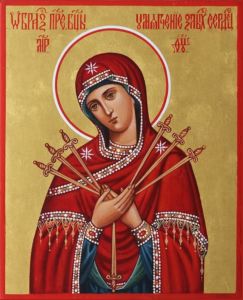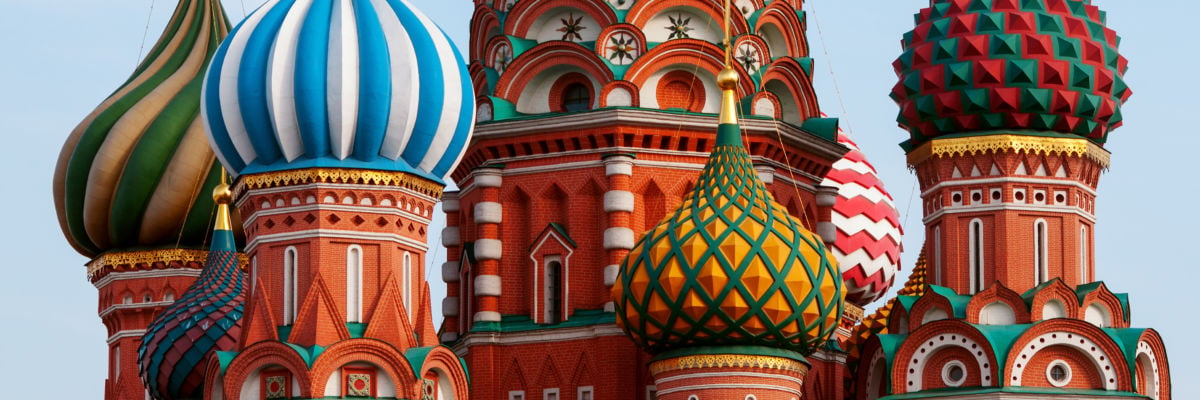
This Friday, on the solemnity of the Annunciation of the Lord, in the Vatican basilica, the Holy Father will consecrate Russia and Ukraine to the Immaculate Heart of the Mother of God.
This will be one of the several acts of consecration pronounced by the popes since Pius XII, each one both interpreting and seeking to fulfill her request.
It will be a great and effective source of graces and mercy, for Russia and Ukraine, and so for the world. It may not be much noticed by the world, or taken very seriously by NATO or the European Union. In the Kremlin, however, they are taking it seriously, as well as in the ancient monasteries of Kiev, long consecrated to the Mother of God as the Seat of Wisdom. They may be a bit suspicious of the pope, but they are aware of the significance of his action.
To borrow some phrases from the Venerable Pius XII in his discourse when he defined the dogma of Mary’s bodily assumption: the “the stones of innumerable ancient temples erected everywhere” in Russia and Ukraine “in honor of the Mother of God will tremble with hidden emotions” as the vicar of Christ consecrates the land on which they stand and the peoples who worship in them to the Immaculate Heart of the Mother of God, the all-pure and all-wise reigning queen of Russia and Ukraine.
Stones have indeed been trembling—and not in a hidden way, but from bombs, in the long civil war between local Russians and the Ukrainian government since 2008, and now with the attempt of the Russian government to subdue and occupy Ukraine to bring the Ukrainians out of American military and political influence.
This is a dangerous situation, foreboding of wider and more devastating conflict for the nations that form the NATO alliance, and terrifying in its destructive prospects for the whole world.
Our Lady warned of such things, and she urgently asked that we pray the daily rosary and do penance for the conversion of sinners, and of Russia in particular (which, in 1917 when she was speaking, included Ukraine, as it had for some thousand years or so), all the while practicing devotion to her Immaculate Heart. In return for this, and after the consecration she asked for from the holy father and the bishops of the world, she promised an era of peace.
We should heed her requests and hope that this upcoming act of consecration will draw down the blessings of conversion of hearts and lasting peace.
Do the Russians have an explicit devotion to the heart of Mary? Well, in a certain way, yes. They have the icon of “the Mother of God Softener of Hardened Hearts.” It is in fact the principal Marian icon, on the left as one faces the altar, of the original crypt church of the restored Cathedral of the Savior in Moscow, which is used as the patriarch of Moscow’s principal church. This is hardly a coincidence, especially given the great rarity of an image of Our Lady not holding the infant Jesus being placed in that position in an Orthodox or Greek Catholic church.
What does this icon look like? It shows Our Lady’s heart surrounded by seven swords of sorrow. Its title, Softener of Hardened Hearts, expresses the effect rather than the object of the devotion. It tells us that Mary’s heart brings about conversion, even in hardened sinners. The conversion of sinners was the principal concern of Our Lady’s apparition at Fatima (not to mention Lourdes and La Salette, and many others).

Now, there are always critics and skeptics. The third Fatima secret and all the discussions about whether the various popes fulfilled Our Lady’s requirements for the consecration have made the interpretation and implementation of the apparitions fraught with controversy. Oceans of ink, hours on YouTube, even whole novels become almost a drug for those willing and interested. Thank God, far more of the faithful throughout the world simply accept the messages of Fatima and fulfill their conditions as best they can. At least some of the media groupies are also doing this, along with their theorizing!
In dealing with apparitions, it is important to keep some things in mind so we judge and act as Catholics. First off, any revelation given after the death of the last apostle is not part of the public revelation of the Church. It is what is called a private revelation. Sure, it may be a message for the whole world, but it comes from individual Christians as a grace they have received and feel compelled to share with others.
Thus, it is for the Church to judge if a private revelation gives evidence of a supernatural origin and is in accordance with the dogmas of the Faith, and so is worthy not of divine faith, such as we have in the Creed, but of human faith.
This also means we have to be moderate in expressing our opinion about the Church’s response to an apparition. After all, it is for the pope and the bishop of the place to pronounce on a given revelation. They stand as judges of an apparition; the apparition does not stand in judgment of them! Our Lady never exercised episcopal or papal jurisdiction in the Church, not on earth or from heaven, so she is not the pope’s or the bishop’s sacramental superior. You might say a given pope did or did not heed the Blessed Mother’s warnings, but it is silliness to say he “did not obey” her.
Similarly, the words used by the seers of Fatima or in any other approved apparition are not divinely inspired and infallible like the words of Sacred Scripture. This means that the seers could have been mistaken on one detail or another. There are many examples of this in the lives of the saints, who received, but over-interpreted some of these messages. (See the treatment of examples of this in Poulain’s Graces of Interior Prayer.)
The key point is to have a devout and reverent attitude toward what the saints have believed and holy Church venerates. The Fatima apparitions have two liturgical feasts in the universal Roman calendar: of Our Lady of Fatima on May 13, and soon thereafter, of the Immaculate Heart of Mary, the day after the feast of the Sacred Heart of Jesus. She has two beatified souls who, along with Lucia, saw the apparitions and practiced what they taught perfectly: Blessed Jacinta and Blessed Francisco. Thus, a Catholic has every reason to do as we all know Our Lady has been asking—prayer for the conversion of sinners, penance, and the daily rosary among them.
There is a memoir of the apparitions written by Lucia called Lucia in Her Own Words. There we can find the best effect of an apparition on the soul who received it. And she provides an example to us for our preferred spiritual reading, and the difference between private and public revelation. She also shows us the right state of mind in which to confront death and corruption, something so many fear with the threats of wars and catastrophes.
Here is what Lucia says about the revelation she studies most:
Before making a start [on her memoir], I thought of opening the New Testament, the only book I desire to have here in front of me. . . . In St. Paul’s letter to the Philippians 2, 5-8, I read as follows: “Let this mind be in you, which was also in Christ Jesus, who, being in the form of God . . . emptied himself, taking the form of a servant. . . . He humbled himself, becoming obedient unto death.”
After reflecting awhile, I read also verses 12 and 13 of the same chapter: “With fear and trembling work out your salvation. It is God who works in you, both to will and to accomplish, according to his good will.”
Very well then. I need no more than this: obedience and abandonment to God who works within me. I am truly no more than a poor and miserable instrument which he desires to use, and in a little while, like a painter who casts his now useless brush into the fire so that it may be reduced to ashes, the Divine Artist will himself reduce his now useless instrument to the ashes of the tomb, until the great day of the eternal alleluias. And I ardently desire that day, for the tomb does not annihilate everything, and the happiness of eternal and infinite love begins—now!
May it be so for all of us through the Immaculate Heart of Mary. Amen.



